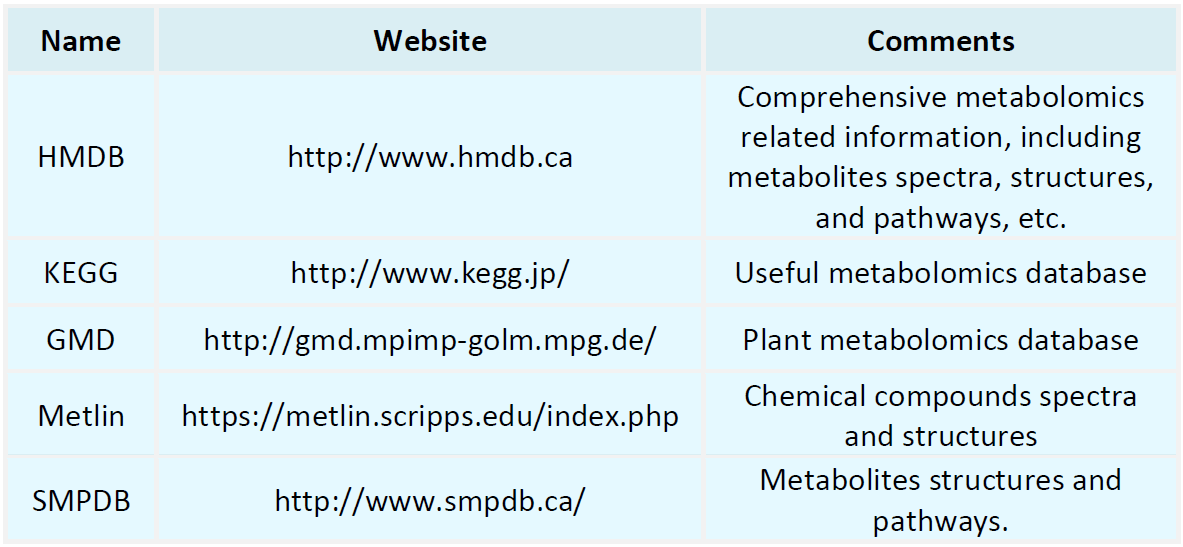Resources
Proteomics Databases

Metabolomics Databases

-
Tandem Liquid Chromatography–Mass Spectrometry (LC-MS/MS) is a powerful analytical technique that integrates the separation efficiency of liquid chromatography (LC) with the sensitivity and specificity of tandem mass spectrometry (MS/MS). This method has been widely applied across diverse fields, including life sciences, pharmaceutical development, clinical diagnostics, environmental monitoring, and food safety. The core strength of Tandem LC-MS lies in its ability to first separate compounds in complex....
-
• Biomarker-Based Drug Development
Biomarker-based drug development is a systematic approach that drives the discovery, validation, and clinical application of novel therapeutics through the identification and utilization of specific biomarkers. Biomarkers are typically defined as molecules or characteristics that objectively indicate physiological or pathological states within the body—such as proteins, nucleic acids, and metabolites—which are commonly found in biological samples including blood, urine, and tissue. The primary objective....
-
Organelle proteomics refers to a research approach that systematically identifies, quantifies, and functionally annotates all proteins localized within specific organelles. Organelles, such as mitochondria, endoplasmic reticulum, Golgi apparatus, lysosomes, and the nucleus, are subcellular structures responsible for executing diverse biological functions. The proteins constituting these organelles not only play essential roles in maintaining their individual functions but also participate in coordinated....
-
• Single Crystal X-ray Structure Analysis
Single crystal X-ray structure analysis is a powerful technique for elucidating the atomic and molecular structures of substances. By analyzing the diffraction patterns of single crystal samples, researchers can precisely determine the spatial arrangement of atoms within the sample. This method not only reveals both intra- and intermolecular interactions but also provides detailed information on bond lengths and angles, laying a solid foundation for a deeper understanding of the chemical and physical ......
-
• Single Cell Whole Exome Sequencing
Single cell whole exome sequencing is a genomic technology focused on sequencing the exome at the resolution of individual cells. Exons represent the protein-coding regions of the genome, and even subtle variations in their sequences can profoundly alter protein structure and function, ultimately influencing vital biological processes. By leveraging single cell whole exome sequencing, researchers can investigate cellular heterogeneity in diseases such as cancer with unprecedented detail. This is parti......
-
• Biolayer Interferometry Data Analysis
Biolayer interferometry data analysis is a high-precision technique that utilizes the principles of optical interference to monitor biomolecular interactions in real time. By detecting the rate and extent of molecule binding or dissociation on a solid surface, it provides quantitative information on kinetic parameters such as the association rate constant (kon), dissociation rate constant (koff), and affinity constant (KD). Biolayer interferometry is an indispensable analytical tool in biochemical and......
-
• Plasma Amino Acid Analysis for Diagnosis
Plasma amino acid analysis for diagnosis is a laboratory method used to identify potential metabolic disorders or underlying diseases by precisely measuring the concentration and ratio of various amino acids in plasma. Amino acids, as fundamental components of proteins, also independently engage in numerous physiological processes such as energy metabolism, neural signaling, hormone synthesis, and immune regulation. Variations in their levels can indicate the health status of an organism. Given their ......
-
• MALDI-TOF Mass Spectrometry for Microorganism Identification
MALDI-TOF mass spectrometry for microorganism identification is a technique that utilizes matrix-assisted laser desorption/ionization time-of-flight mass spectrometry (MALDI-TOF MS) to identify and classify microorganisms. The core principle involves desorbing and ionizing protein molecules in a sample using laser energy, followed by determining their mass-to-charge ratio (m/z) based on their time of flight. This process generates characteristic fingerprint spectra that represent the protein compositi......
-
• MALDI-TOF for protein identification
MALDI TOF for protein identification is a technique that combines matrix-assisted laser desorption/ionization (MALDI) with time-of-flight mass spectrometry (TOF). In proteomics research, understanding and identifying the structure and function of proteins is essential. MALDI TOF for protein identification determines the composition and structural information of proteins by analyzing their mass-to-charge ratio (m/z), with the key advantage of enabling accurate mass measurement without compromising prot......
-
• In Silico Drug Target Identification
In silico drug target identification employs advanced computational techniques to predict and discover molecular structures or sites within organisms that are likely to interact with pharmaceuticals. This approach relies on precise three-dimensional modeling of biological macromolecules, enabling researchers to simulate molecular interactions and predict potential binding sites. Common methods involved in this process include molecular dynamics simulations, binding free energy calculations, and molecu......
How to order?







